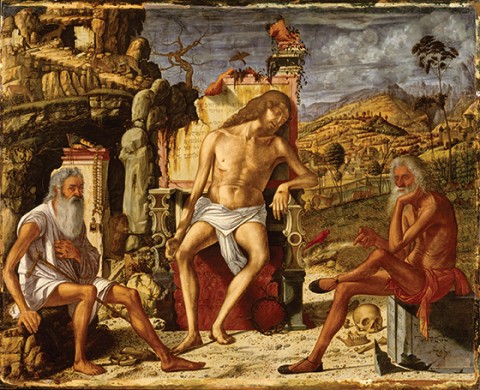The Meditation on the Passion, by Vittore Carpaccio (ca. 1460–1525)

The dead Christ sits between St. Jerome on his left and Job on his right. Christ appears to be sleeping—a reference to the resurrection. The skull and human bones near Job associate him with death and disease. Vittore Carpaccio, a Renaissance artist from Venice, pairs Job with Jerome, the great biblical scholar of the patristic period, who wrote that Job “prophesies the resurrection of men’s bodies at once with clearness and with more caution than anyone has yet shown.” “I know,” Job says, “that my Redeemer lives, and that at the last he will stand upon the earth . . . and I shall see God” (Job 19:25). The Hebrew inscription “My redeemer lives 19” is legible on the marble slab on which Job sits. The inscription faces toward Jerome, who has influenced the Christian interpretation of Job as a paradigm of patience, a believer whose suffering compares with Christ’s, and a prophet who foretold Christ’s resurrection.


